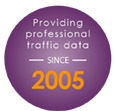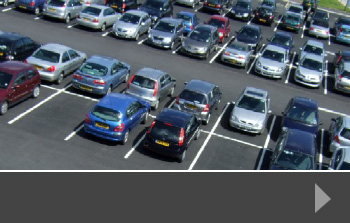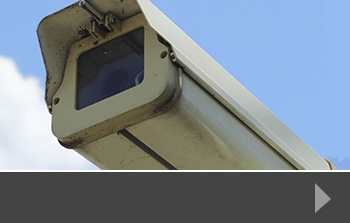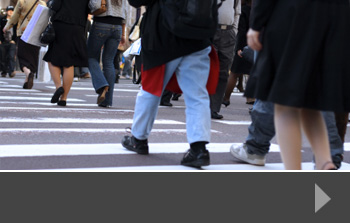Road Traffic Calming Measures Vital for Schools
The increase in complaints from parents and residents about how traffic and road conditions link to potential dangers to schoolchildren is becoming a real issue for those in charge of highways.
At key periods during term time – usually between 8.30-9.00am and 2.15-3.30pm – roads around primary and secondary schools become jammed with parents dropping off or collecting children. This not only creates potential danger zones for the children, but also interferes with the smooth flow of traffic in the area.
Surveying local road traffic conditions
Local papers often report on campaigns for safer roads near school – whether it’s parking, turning or speed issues. Local traffic conditions vary from one school to another and because many older schools have been extended to cope with intake demands, road systems have to handle increased traffic without any changes to the road or to school access.
Councils responsible for road traffic control can use traffic and parking surveys to learn more about the way roads around schools are used. These surveys collect a wide range of data, including peak travel times, vehicle counts, speed data and parking locations and figures. In addition, pedestrian surveys and journey time data can give a wider view of current conditions, allowing councils, schools and developers to work together to improve travel for road users and make the school run period safer for children.
What traffic calming measures do councils add?
The key for the safety of children is to reduce traffic speed, so councils often introduce 20mph limits in a fixed zone outside schools. They may also install speed bumps, or alter the layout of the road so that drivers have to slow down to navigate. Painting signs on the road may also contribute to speed reduction as will fixed road signs.
Parking may be trickier. Some areas have resident-only street parking next to schools, whilst nearby businesses may restrict parking to customers only. Schools could encourage parents to park slightly further away from school and walk the last 5 minutes of the journey.
Specialist speed surveys from RDS
At Road Data Services, we specialise in collecting and reporting data that promotes informed decision making. Our surveys include speed, journey time, parking, pedestrian and queues, allowing you to tailor the survey and data to your specific needs. Using the information we collect, you can see how to alter or build road systems or introduce traffic calming solutions to make journeys smoother and people safer.
To find out more, contact us today.
One of the many minor road offences that annoy drivers around the UK is unauthorised vehicles that use bus lanes to avoid queues at traffic lights or roundabouts. Hull Council has recently used Automatic Number Plate Recognition (ANPR) to catch over 10,000 motorists using two of the city’s bus lanes illegally over a two week period.
Global automatic number plate recognition comes to Hull
Although ANPR systems are mainly used by police forces to identify those who are driving without insurance or road tax, or are driving a suspect vehicle, it has many other potential uses, including traffic analysis. The results of Hull’s bus lane trial may result in a permanent fixture of cameras, focused on areas where breach of rules like bus lane usage is high. The Council said that drivers were less likely to abuse bus lane privileges if they knew they were likely to be caught on camera and fined, and that this would increase the efficiency of public transport.
Such use of these cameras to police offences works if they are well planned and well-advertised, and if the fines are kept within acceptable limits. This may help the driving public to see them as a viable deterrent rather than a cash-generating project for the councils that implement them.
The cost – automatic number plate recognition systems
Just like speed cameras, drivers need clear warnings that such filming is taking place, and in most cases the warning alone is enough to dissuade drivers from creeping into the bus lane in order to gain an advantage over waiting traffic. Reports suggest that those penalised for traffic offences are more likely to pay their fine if they are directed to photo or video proof, and ANPR systems would be extremely useful in this regard. Whilst they may be costly to buy and install, the long term benefits to traffic movement and driver safety is likely to be worth the investment.
Automatic number plate recognition products from RDS
At Road Data Services, we offer specialist automatic number plate recognition software and equipment for traffic survey use. We build these cameras in-house, producing units that are more accurate and reliable than many on the market, and which include infra-red sensors so that they can work just as well in the dark.
Extremely useful for monitoring anything from journey times to car park usage, these ANPR systems offer an outstanding technological solution for a wide range of end users. To find out more about our range of cameras and to talk about your next ANPR or traffic survey project, just contact us today.
Councils across the UK are continually looking at sustainable and successful ways to develop land for housing, business and retail. These projects tend to face local opposition for a variety of reasons, one of which is traffic and transport management.
Travellers who are already faced with delays and congestion on their way to work, school or the shops, simply don’t want more traffic on the roads, so it makes sense for developers and planning authorities to pay attention to the impact of development on local traffic routes and suggest new traffic management schemes that might help.
Residents in Northampton conduct own traffic survey
In the Whitehills and Spring Park areas of Northampton, residents are concerned about the traffic implications of a house-building project that has been approved by the local Council. Several hundred homes are due to be built in the future, and residents are worried that the traffic on the A508, already busy at peak times, will be unmanageable once the new site is occupied.
To illustrate their point, a group of residents carried out a traffic survey over a 10-day period. Although not as precise or scientific as a professionally-designed survey would be, the group reported some crucial findings. A roundabout on the route regularly causes traffic queues, and between 7.30am and 8.30am, an average of 871 cars queued to get around the roundabout, travelling at a speed of around 3mph.
Traffic at the heart of development
Few development schemes are traffic-free or create no additional traffic on nearby routes, so making transport planning a key part of the development plan is essential – not just to keep existing residents and road users happy, but to ensure a sustainable travelling future for all local road users. This might include a straightforward traffic survey, but if developments are close to schools or hospitals, planners should also look at pedestrian issues and consider other road users, such as cyclists. Choosing to integrate traffic planning into new developments is essential if we want to keep people moving.
Traffic surveys and more from RDS
For professional advice and experienced traffic survey planning, execution and reporting, talk to Road Data Services. We work with developers, planning committees, local councils and interested parties to collect the data that helps you to make the best decisions for your community or for a wider transport scheme. Just call us today to find out more.
An £88 million project to manage traffic flow and improve driver safety on a seven-mile stretch of road where the M4 meets the M5 at the Almondsbury Interchange just outside Bristol. The project uses a variety of smart technologies to manage traffic, helping road users to keep moving safely, reducing the potential for accidents and making the most of the motorway network.
HA Traffic Survey
The scheme was launched in January 2014, and now the Highways Agency is conducting a traffic survey which asks for driver experiences, so that the Agency can assess the effectiveness of the system in its early days.
The scheme uses a number of technologies and traffic management options which may be familiar to those driving on other busy sections of the UK motorway network. These include variable speed limits, the use of the hard shoulder as an additional lane during heavy traffic and responsive overhead signs that can give quick and accurate information to drivers about lane closures, accidents or incidents ahead and access for emergency vehicles.
Feedback on Smart Road Management
“More than 140,000 vehicles use this stretch of the M4 and M5 every day,” said Paul Unwin of the Highways Agency. “After a two year period of residents and commuters patiently enduring road works and heavy construction, we are now keen to hear just how our road users are adjusting to the new system. I therefore urge drivers to take our online survey, so we can better understand the needs of road users for future projects.”
The Highways Agency also said that although work was complete and the project launched, there will still be some overnight closures and diversions as additional work takes place. Diversions will be in place for those road users affected.
Do you use this stretch of motorway? If you’d like to give your feedback, you can visit the Highways Agency Traffic Survey page.
Traffic Survey Data from RDS
For detailed, tailored traffic surveys, including automated traffic counts, speed surveys, queue surveys and journey time surveys, talk to RDS. We specialise in designing, implementing and reporting on a wide range of traffic and pedestrian-related issues. Our data helps you to make decisions about highways management, traffic flow around new developments, improved pedestrian and cyclist safety and much more. To find out how we can help, just contact us today.
A traffic survey in Cambridge, designed to gather data to improve traffic flow, caused its own traffic jam recently.
The survey was carried out on a face-to-face basis, which involved stopping traffic so that drivers could be asked key questions about their journeys in a specific part of Cambridge. The survey was needed so that traffic planners can update an ageing system that often sees congestion and frustration from drivers.
Questionnaire survey
On this occasion, however, it was the traffic survey itself that caused the problems. Interviewers, backed by police officers, stopped cars to ask several questions. This method caused a tailback on the A14, one of Cambridge’s major and busiest routes. A spokeswoman for the Highways Agency said that the delays were regrettable, but that drivers on other routes would also be surveyed over the coming months so that a clear idea of usage can emerge.
Designing and carrying out questionnaire traffic surveys whilst causing the least interference possible is an important part of the survey process. In some cases, lay-bys are used to draw a sample number of vehicles off the road, enabling data to be gathered without slowing the flow of traffic, but each survey should be individually designed for the environment, time of survey and amount of data required in order to be useful.
Efficient traffic surveys from RDS
For a wide range of traffic survey services, including questionnaire surveys, talk to RDS. We have the experience and personnel to help your survey run smoothly.
Denholme, a small Yorkshire town that comes under Bradford City Council, has expressed its disappointment that the Council has decided against installing traffic lights at a junction already considered dangerous.
A consultation was held with residents and Denholme Town Council to look at improvements to New Road, particularly in light of a planning application for 35 new homes. The road is already busy and there were concerns that additional traffic would make the junction with Long Causeway even more dangerous.
Traffic count for peak hours
At the end of the consultation, Denholme Town Council recommended the installation of traffic lights to manage traffic flow. When the housing application was submitted however, the only concession to additional traffic was new road markings and signs. The Town Council was happy with the plans for new housing, provided adequate provision was made for traffic and pedestrian safety at the junction.
A traffic survey has been conducted at the junction which shows a total of more than 6,500 vehicles using the junction during peak hours. Explaining Bradford City Council’s decision against traffic lights, its principal engineer for Highway Development Control said:
“The opinion is the layout of the junction would require three-phase signals rather than the usual two, and this would increase potential delays.
“As part of the proposals for the development, the substandard visibility at the Long Causeway junction is being greatly improved, and this will significantly improve the safety of motorists. This forms part of the recommendation to the planning panel meeting, but the final decision will be made by members at that meeting.”
Reliable traffic data from RDS
Our traffic and pedestrian surveys are designed to get the most reliable data to help support your plans. Talk to us today about how we can help you to find out more about traffic and road use in your area.
The Government has announced an investment of £100 billion in the UK’s infrastructure, including £28 billion on road improvements. Treasury Minister, Danny Alexander, said it was the largest single investment in road infrastructure for almost 40 years.
Major traffic flow improvements
Key projects to improve the road network and the flow of traffic include upgrading the A14 between Cambridge and Huntingdon, which will cost £1.5 billion. The improvements had already been planned to start in 2018, but will now begin in 2016. In addition, the M4 between London and Reading will be widened to 4 lanes, helping to ease traffic congestion on a key commuter route. In addition, there will be over 20 other major road improvement projects around the UK, including managed motorway schemes and improvements to the A38 junction at Derby.
The report, Investing in Britain’s Future, was released at the end of June and acknowledges that the amount of traffic and the subsequent congestion has been a problem across the UK, and says it will be identifying and funding solutions to some of the “most notorious and longstanding road hotspots in the country, including feasibility studies to look at problems on the A303 to the South West, the A27 on the south coast, the A1 north of Newcastle, the A1 Newcastle-Gateshead Western by-pass, connectivity to Leeds airport and trans-Pennine routes between Sheffield and Manchester”.
Quality traffic surveys needed
In order to provide the best solutions to some of the UK’s most congested areas, detailed and precise traffic surveys will be needed. The data produced by surveys like those carried out by us at Road Data Services will give planners the information they need to create improvements and plans that will greatly improve traffic flow, reducing journey times and aiding local economies.
Contact us today to find out more about our professional traffic surveys.
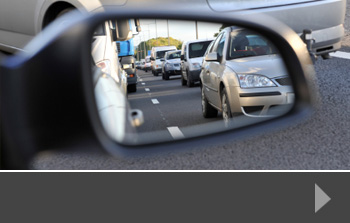
Traffic Surveys
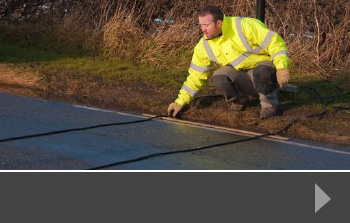
Automatic Traffic Counts
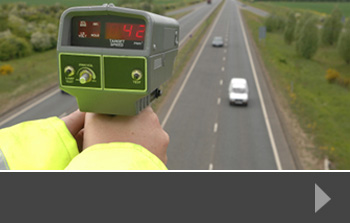
Speed Surveys
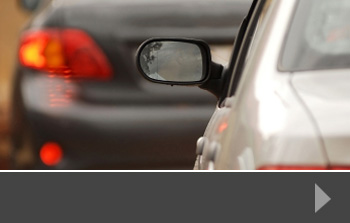
Queue Surveys
A recent traffic survey for Transport for London (TfL) shows that cyclists make up more than 60% of traffic at peak times on certain routes. TfL’s Central London Cycling Census looked at several key routes into and around the capital and their bicycle traffic volume study revealed some interesting trends.
Manual count traffic survey
The cycling with traffic data was collected as a manual classified count survey across 164 locations. Both cyclists and motor vehicles were counted between 6am and 8pm during weekdays, allowing the data to show traffic types at key peak times as well as less busy times during the day. Data gathered from the survey shows:
24% of all vehicles at surveyed sites are bicycles
Bicycles make up 16% of all traffic across the hours surveyed
Almost 50% of all northbound traffic crossing Waterloo, Blackfriars and London Bridges are cyclists
62% of northbound morning traffic on Southwark Bridge is made up of bicycles
The results show that road cycling has become an increasingly popular way to commute into London and to get around the capital during the day. This traffic is from commuters who cycle from train stations to their workplace as well as those who live in the capital and cycle to avoid lengthy traffic congestion. The Mayor of London, Boris Johnson, is investing in a range of measures that promote cycling across London.
Dedicated traffic surveys from Road Data Services
For councils, government departments and special interest groups who need clear, accurate data about the way vehicles, cyclists and pedestrians use our road network, contact RDS. We can carry out a range of traffic surveys, pedestrian surveys and questionnaire interviews to help you monitor trends, anticipate demand and plan for the future.
You can find out more and get a no-obligation quote by contacting us about traffic surveys today.
International car brand, Ford, has suggested that the future is faster and safer than we might think. Talking about advances in car technology, Ford says that we could see self-driving cars that can drive for you, improving your average journey time and making you more fuel efficient.
Today’s technology for tomorrow’s traffic
Ford says that the technology to drive this type of vehicle is available today, calling it Traffic Jam Assist – a system that can judge the distance between you and the cars in front, behind and either side of you, controlling speed and distance so that you maintain a consistent speed, reducing the stop-start nature of human-driven vehicles.
Using simulator studies, Ford says that travel times could be reduced by as much as 37.5% and delays by up to 20%. And with Ford’s cruise control, the driver can take charge at any time just by pressing the brake or the accelerator or moving the steering wheel.
Ford not the only traffic assist brand
Ford’s system is designed to work in specific conditions – slow moving traffic in defined lanes. Other vehicle brands have also been working on similar technologies – Volvo has announced its City Safety and Pedestrian Safety systems and Toyota also previewed a self-drive car recently. It’s safe to say that most car manufacturers will be looking at ways that technology can both keep us safe and keep us moving in the years to come.
Speed surveys and queue surveys from RDS
At Road Data Services we can help to mitigate traffic congestion by providing precise survey data through speed surveys and queue surveys across the UK. Our systems give you all the information you need to plan routes, improve roads and make things better for road users. Just contact us today to find out more about our traffic surveys.
Local and national newspapers are full of reports on the trouble or potential for trouble caused by new developments. All new building work, whether an out-of-town supermarket, new housing or urban redevelopment needs to facilitate the traffic flow, and that often starts with a traffic survey.
Why commission a traffic survey?
In order to plan for the best traffic flow around a new development, developers, town planners and consultants need to know what’s happening now. Accurate data from traffic flow monitoring, that describes existing route usage, journey times and types of vehicles using current routes will help decision makers to anticipate the effect that additional traffic levels and new access points may have.
Collecting traffic survey data
A professional survey company can collect data in a number of ways, including manual counts and video surveying. A complex development may need a survey that covers a number of different elements and requires a variety of collection methods. This allows planners to get a clear picture of what’s happening now. In addition, surveyors can collect opinions from the local community and from road users, providing direct feedback from personal experience.
The dangers of traffic ignorance
If you go ahead with development plans without seriously considering current and potential traffic implications, your plans are likely to be rejected at the first stage of the planning process, costing you time and money. It makes sense to have the traffic data information you need and use it to enhance your planning application.
Talk to Road Data Services today to find out more about how our range of traffic surveys and interview surveys can help your next development.

